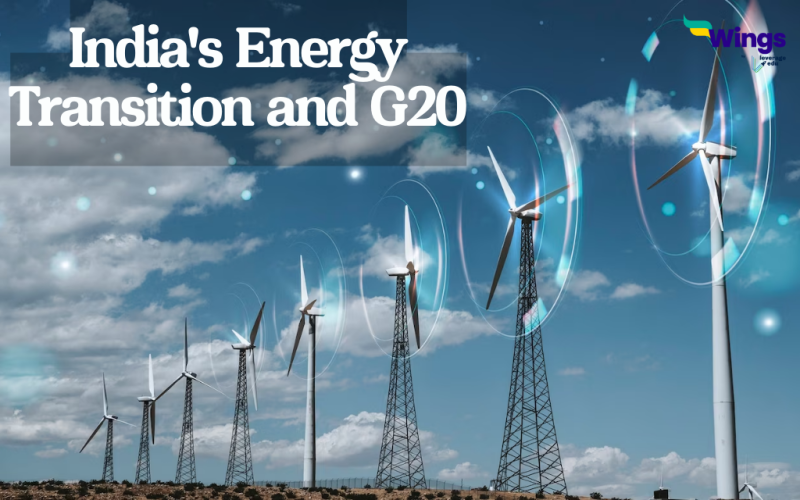The G20 (Group of Twenty) summit is an annual meeting of leaders from the world’s 20 largest economies, which represent about 80% of the world’s GDP and two-thirds of its population. The G20 was established in 1999 to bring together leaders from developed and emerging economies to discuss global economic issues and promote international cooperation.
The G20 summit typically focuses on a range of issues, including global economic growth and stability, trade, investment, financial regulation, energy policy, climate change, development, and poverty reduction. The summit provides a platform for leaders to exchange views, discuss common challenges, and coordinate their efforts to address global issues.
India’s energy transition has been a key topic of discussion at G20 summits in recent years. India has been working towards transitioning towards a more sustainable and renewable energy system to meet its energy needs while reducing its carbon emissions.
This Blog Includes:
G20 and India’s Renewable Energy Sector
India has set a target of achieving 450 GW of renewable energy capacity by 2030. This includes 280 GW of solar power, 140 GW of wind power, 10 GW of biomass power, and 5 GW of small hydropower. India has also launched several initiatives to promote clean energy, such as the International Solar Alliance (ISA) and the Coalition for Disaster Resilient Infrastructure (CDRI).
G20 and Energy Efficiency in India
India has been focusing on energy efficiency measures to reduce its energy demand and promote sustainable energy use. The government has launched several initiatives such as the UJALA scheme to promote the use of energy-efficient LED bulbs, and the Perform, Achieve, and Trade (PAT) scheme to encourage industries to improve their energy efficiency.
India has also been working towards reducing its reliance on coal-based power generation and promoting the use of natural gas as a transition fuel. India has also been investing in new technologies such as electric vehicles and energy storage to promote a more sustainable transport system.
What are the Low-Cost Financing options for the Energy Transition?
Emerging and developing countries will account for most of the increase in emissions in the coming decades unless stronger action is taken to transform the energy sector.
Emissions from emerging and developing countries are projected to increase by 5 gigatonnes (GT) over the next 20 years in scenarios reflecting today’s policies and existing policies. Clean energy investment in emerging and developing markets fell 8% to less than $150 billion in 2020. The investment slightly increased in 2021, but failed to make an impact on the energy sector.
To put the world on track to achieve net zero emissions by 2050, annual clean energy capital spending in these economies will need to increase more than sevenfold to over $1 trillion.
Status of the Clean Energy Sector in India
The G20 summit is hosted by a different member country each year, and the summit’s agenda and priorities are determined through consultations with participating countries. The summit typically results in a joint communique outlining the priorities and actions agreed upon by the participating countries.
Listed below are the major achievements of India
- India has set ambitious targets for 500 GW of non-fossil energy, including 450 GW of renewable energy (RE) capacity expansion and 43% renewable energy (RE) purchase commitments by 2030 working on energy.
- With India’s focus on net zero carbon emissions and innovative partnerships with international organizations and countries, the energy transition move should lead to a greener future for the country.
- These goals are supported by various policies such as (Energy Conservation (Amendment) Act), Missions (National Green Hydrogen Mission), Financial Incentives (Incentives Related to Production), and Market Mechanisms (Future National Carbon Market).
In addition to political, legal, and regulatory instruments, the success of these commitments is based on the technological and financial integration of developed countries. Prime Minister Modi’s Panchamrite promise at the COP-26 Glasgow conference has served as a guardrail for nation-building and the north star of successive governments.
For more such updates about the G20 and Y20 Summit stay tuned to our page. Don’t forget to follow us on Instagram, Facebook, Twitter, and Linkedin.
 One app for all your study abroad needs
One app for all your study abroad needs














 45,000+ students realised their study abroad dream with us. Take the first step today.
45,000+ students realised their study abroad dream with us. Take the first step today.
